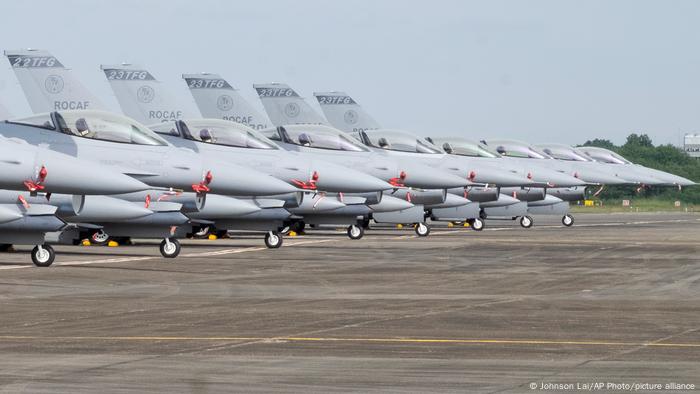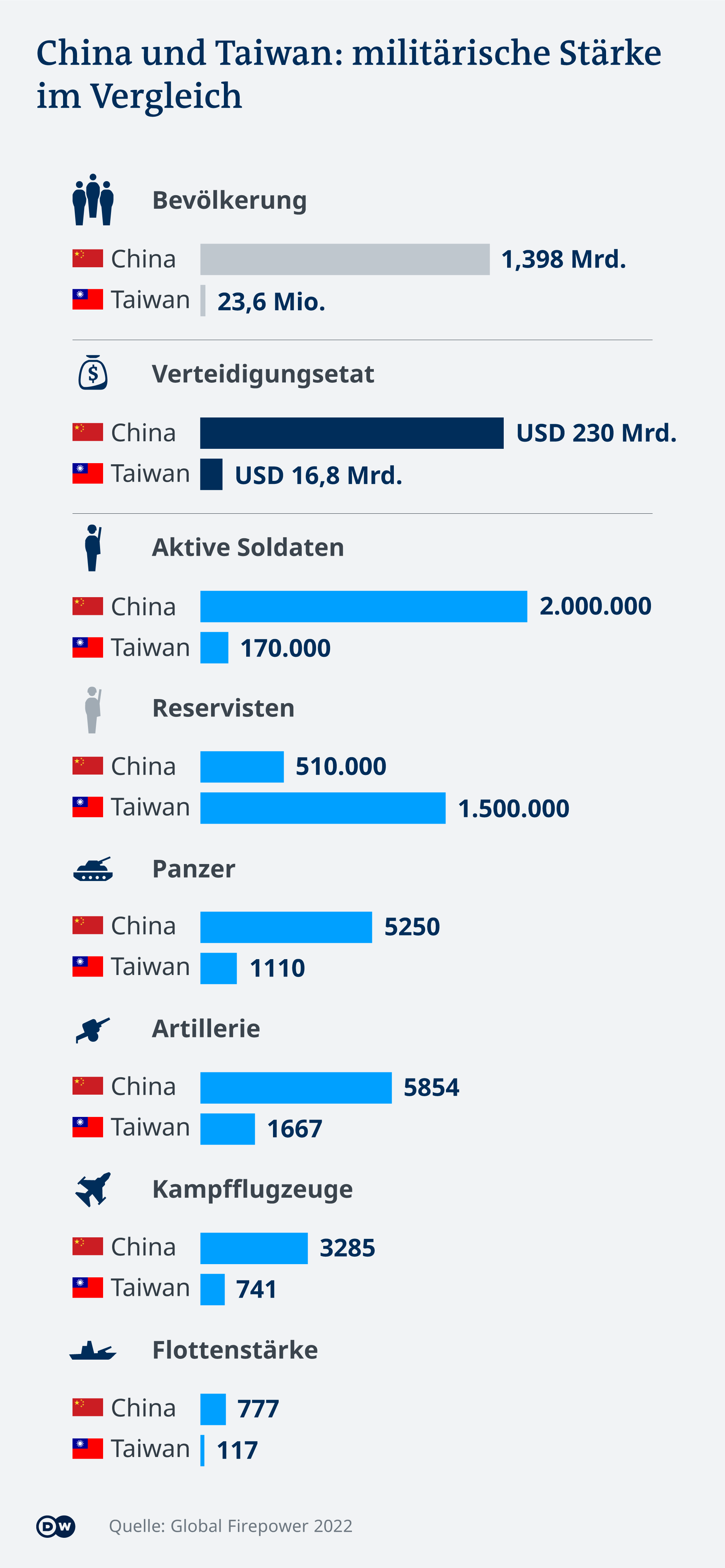After Nancy Pelosi's visit to Taiwan, the dispute over the “One China policy” between Beijing, Taipei and Washington grows. An overview of the military balance of power in the region in graphics.

F-16V fighter aircraft on the Taiwanese military base Chiayi
After the visit of US House of Representatives Speaker Nancy Pelosi to Taiwan, Beijing threatened retaliatory measures. The Chinese government regards the visit as a violation of the USA's previously practiced “One China Policy”.
Washington then recognizes the People's Republic of China as the only Chinese government. However, it reserves the right to maintain informal relations with the ROC government on Taiwan and to assist in the island's defense.
Political tensions between Taiwan and China date back to the Chinese Civil War (1927-1949). In the longstanding conflict between the Communist Party and the right wing of the Kuomintang movement led by politician and military leader Chiang Kai-shek, the Communist Party prevailed after 22 years. After the proclamation of the People's Republic of China in 1949, the Kuomintang withdrew to Taiwan. Beijing still considers Taiwan a part of its territory.

In terms of military strength, China is superior to Taiwan in almost every respect – from tanks to artillery to aircraft. However, Taiwan has a larger military reserve of ground forces, which it has trained in the event of a full-scale invasion by China.
An attack on Taiwan has been seriously considered since the 1950s. To defend itself against this, the island state has developed a so-called “porcupine strategy”.
This includes the use of sea mines, anti-ship, anti-aircraft and anti-tank missiles and fast attack boats to prevent an invasion from the sea . Should China launch a land-based military invasion, Taiwan has prepared for guerrilla warfare in the cities and mountainous rural areas.

China now has the second-largest annual military budget in the world, far surpassing any other Pacific Rim nation (see chart). Most estimates assume that China has the largest military fleet in terms of number of ships.
The US has much higher military spending. However, these are distributed over bases all over the world. In the Pacific, the United States remains the dominant military power. They have major air and naval bases in Japan, South Korea and Singapore.

China only has a foreign military base in the East African country of Djibouti. However, Beijing has expanded its reach by building military facilities on the disputed Spratly Islands. The People's Republic of China, Vietnam and Taiwan all lay claim to the archipelago in the South China Sea. Brunei, Malaysia and the Philippines each claim part of it.
China's maritime superiority is largely confined to the so-called “First Island chain,” which stretches from Japan to Malaysia, although China has expanded beyond that in recent years.

China has sought to improve relations with its neighbors and expand its influence in recent years, primarily through trade and infrastructure projects. According to the US Department of Defense, China is looking to establish more overseas bases to expand its military reach.
Beijing's “likely” bases in other nearby countries include Cambodia, Myanmar, Thailand and Sri Lanka Lanka. However, the US remains the partner of choice for many Asian countries. They can count on their strategic allies in Japan, South Korea, Singapore and Taiwan.
Text adapted from English by Astrid Prange de Oliveira.